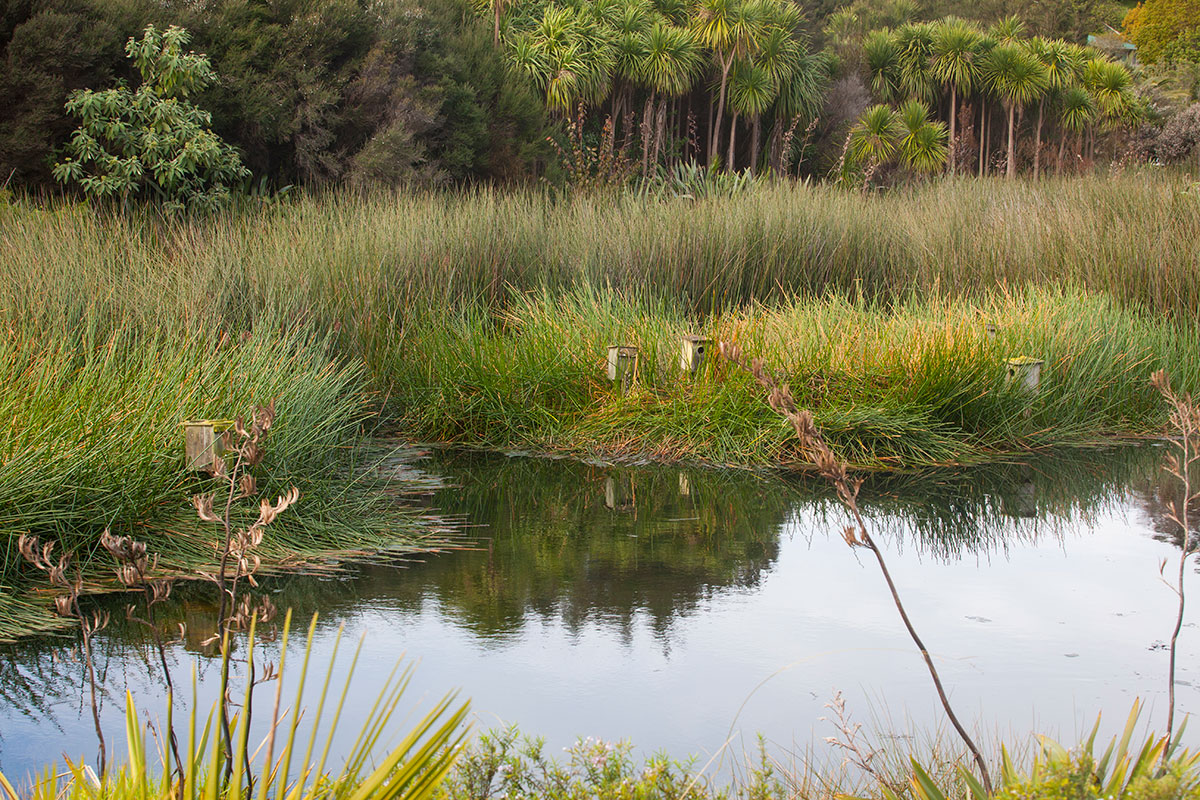Northlanders urged to celebrate World Wetlands Day
1 Feb 2023, 1:41 PM
Northlanders are being urged to celebrate Northland’s unique and diverse wetlands – important for flood prevention – on World Wetlands Day, Thursday 02 February.
 Amy Macdonald…urging people to celebrate Northland’s unique and diverse wetlands – important for flood prevention – on World Wetlands Day.
Amy Macdonald…urging people to celebrate Northland’s unique and diverse wetlands – important for flood prevention – on World Wetlands Day.
Amy Macdonald, who chairs the Northland Regional Council’s Natural Resources Working Party, says World Wetlands Day is celebrated every year on 02 February to raise global awareness about the value of wetlands for humanity and the planet.
She says in the past, many people didn't recognise the true value of wetlands and as a result nearly all of them had been converted to pasture or urban use.
“Wetlands are important because they help prevent flooding and improve water quality, as well as providing the necessary habitat for a number of unique species of plants and animals, many of which are rare.”
Councillor Macdonald says wetlands essentially act as giant sponges, helping to soak up water and boost water quality.
“The plants in them slow the flow of water off the land so that, in times of flood, more can be absorbed into the soil and taken up by the plant life. In summer, stored water is slowly released from wetlands, maintaining water flows.”
Councillor Macdonald says regular national mapping of land cover indicates almost 5400 hectares of freshwater wetland vegetation and almost 140 hectares of saline wetland vegetation was destroyed through human actions in New Zealand between 1996 and 2018.
More than 90 percent of that had been converted to grassland for grazing.
Along with Southland, Waikato and West Coast, Northland was one of the regions that had experienced the largest losses of freshwater over that period, with the region losing an estimated 495ha of wetland to developed land. (In comparison, the Southland area lost an estimated 2713ha over the same period.)
Councillor Macdonald says the news was not all bad for Northland, which also saw an estimated 80ha of freshwater and saline wetland gained in formerly developed land between 1996 and 2018. Work was currently underway to ascertain the total amount of wetland in Northland.
She says wetlands occur in areas where surface water collects or where underground water seeps through to the surface and Northland has nine different types. “There are many different kinds of wetland; some of these include swamps, bogs, marshes, gumlands, saltmarshes, mangroves and some river, lake and stream edges.”
Councillor Macdonald says the regional council is keen to work with Northlanders to protect and restore wetlands and says it has a number of resources, including its Environment Fund, available to help. “Council works with communities all over the region contributing towards fencing stock out of wetlands and/or planting riparian margins.”
She says because they are so important, there are also a number of rules that apply to activities within and near to wetlands.
These activities include earthworks, vegetation clearance, building structures, drainage, taking water and requirements to keep livestock out of them.
Councillor Macdonald says bacteria in damp wetland soils contribute to cleaner water by absorbing and breaking down nutrients from fertilisers, chemicals and animal wastes.
“Wetland plants trap waterborne sediment, preventing silt entering streams and harbours and also provide an enormous food source for fish, birds and other animals.”
Culturally, wetlands are also an important taonga to Māori.
“Not only do they feature in the history and culture of many hapū but wetland plants like kuta (reeds) are traditional materials for clothing, mats, medicine and dyes.”
Wetland animals, especially tuna (eels) and kēwai (crayfish) are valuable food sources.
Councillor Macdonald says of the top 50 ecologically ranked freshwater wetlands in Northland, 33 are within just five of the 19 ecological districts from which wetlands were ranked; Aupouri (eight), Te Paki (eight), Tangihua (seven), Kaikohe (five), and Kaipara (five).
“Additionally, 47 of our top 50 wetlands are known to support ‘Threatened’, ‘At Risk’, or ‘Regionally Significant’ species.”
Councillor Macdonald says more information on wetlands can be found on the regional council’s website at www.nrc.govt.nz/wetlands

Dragonfly Springs Wetland in Onerahi, Whangārei.
